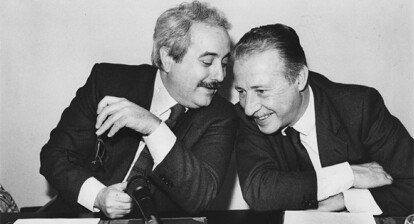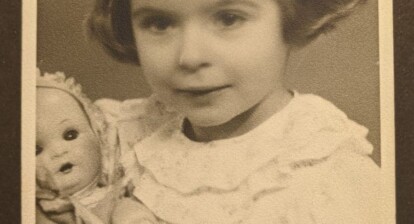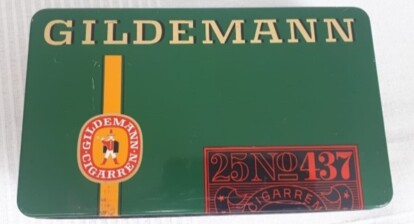It is extremely hard to comprehend the heartbreak that being forced out of your home may cause. Therefore it is important to keep these events from sinking into oblivion. This is a story about my great uncle Andres Männik who managed to escape from his violently occupied homeland and build his life up again.
Background
During World War II in 1944 over 80 000 people fled from Estonia. It has become known as the Great Escape to the West in Estonian history. The Nazi Forces were retreating to the west and the Soviets were attacking from the east. Everyone was afraid of a new communist occupation because the first one from 1940 until 1941 had been catastrophic: 10 000 people were sent to labour camps in Siberia, many were killed before getting to the Gulags and some died due to the harsh conditions in the camps. For the Soviet Union it was very important to break the back of Estonian resistance. Therefore they took away everyone who had any position of power from politicians to academics. This didn’t mean that the common folk was safe because the occupants had been given a certain number of people who had to be resettled by the leaders of the Soviet Union and those numbers had to be met. The whole nation was terrified of their own future.
Life in Estonia 1941-1944
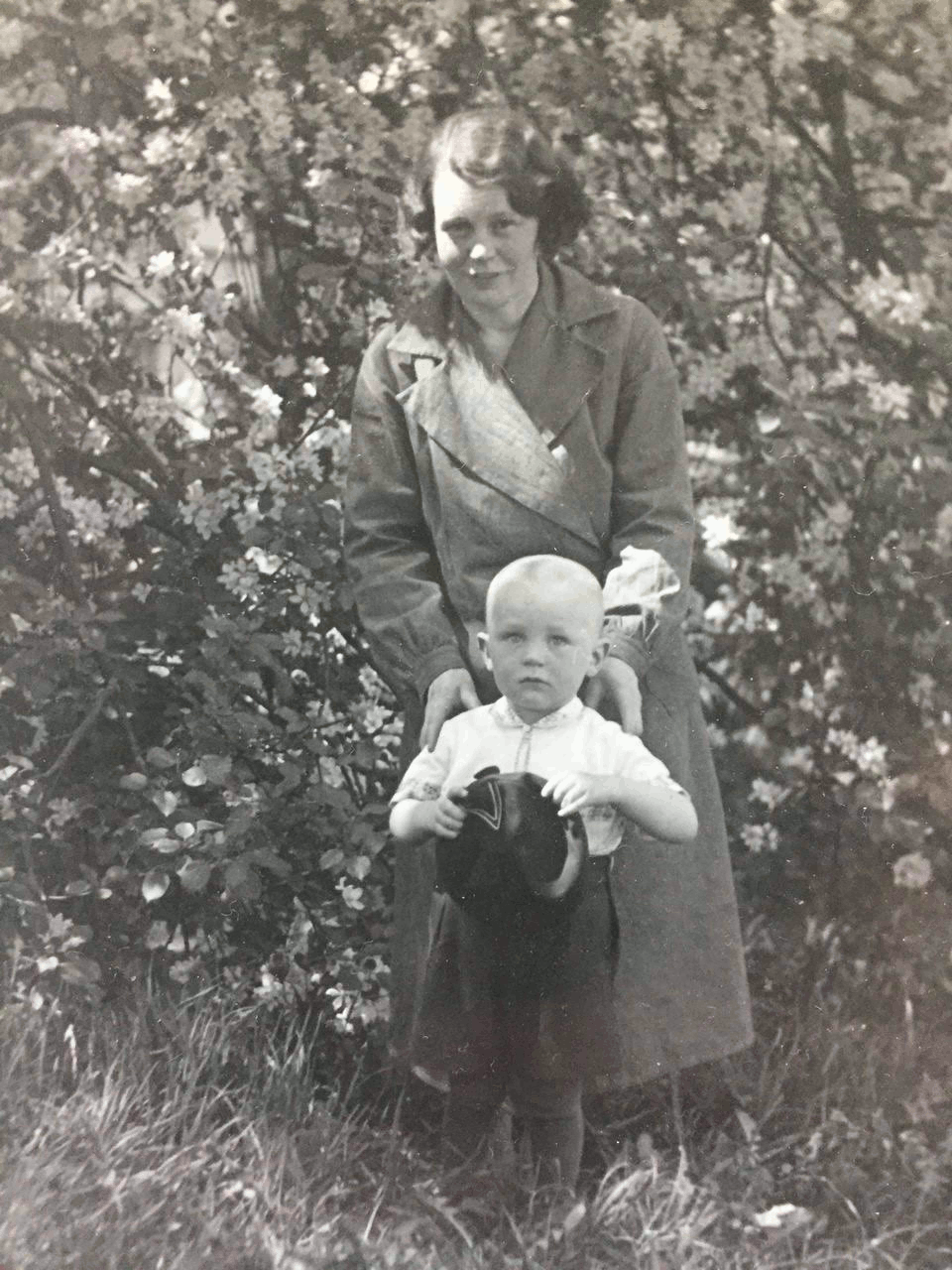
Andres and his mother Olga in late 1930s (Credit: Andres Männik´s private collection).
Andres Männik was born on 15 February 1934. He spent most of his childhood in Tartu, the University Town of Estonia. Andres lived with his mother Olga, who worked as an archivist. She was a very active member of society and dabbled in politics.
The Soviet Union occupied the Republic of Estonia in June 1940. One member of the communist secret police NKVD started pressuring Olga to join the communist party but she did not want to get involved in that kind of affairs, so she and Andres moved to the Southern Estonian Town Valga. On 20th June 1941, Andres and his mother had decided to go to the countryside to enjoy the nice weather. When they came back in the evening, their neighbour told them that some soldiers had come looking for them during the day. Afraid of being deported Olga decided that it was time to lay low for a while. At first they stayed at a nearby farmhouse where their friends lived. They couldn’t stay there for long because everyone hiding unregistered persons was to be shot. They went to hide in the forest where they stayed for 10 days. They had enough food but there was a shortage of water. To avoid dehydration, they licked the dew off the leaves.
When Andres and Olga came out of the forest, the Soviet forces had left and Estonia was under the Nazi Germany occupation. They returned to their hometown Tartu. Soon Olga was arrested by the Nazis for being an active communist. Even though she had been escaping from the agents of NKVD during the whole Soviet occupation time. Every night some prisoners were shot. Thankfully Olga did not stay in prison for long because an old friend, who had a lot of clout among the new authorities, helped her out.
The Great Escape from Estonia in September 1944
In August 1944 it was clear that the Red Army was going to defeat the Wehrmacht in the gruesome battle of Tannenberg Line which was taking place near the eastern border of Estonia. In fear of another Soviet invasion, Andres and Olga had three choices. Firstly, they could go hide in the forest like most of the Estonian resistance at the time did because otherwise Olga and 10 years old Andres would most definitely have been sent to Siberia. Secondly, Estonians still did not want to believe that their beloved country was gone, so Andres and Olga could have just hoped, like many others, that the British Empire would come on a white ship and tell Stalin that he cannot come any further. Lastly, the most realistic opportunity, they could escape to the west until they had the chance.
In September the Red Army was getting closer to Tartu everyday, so Olga and Andres went to Tallinn, the capital of Estonia which is situated in North-Western Estonia. They had an idea to stay in Finland until the war was over because no one truly believed that the occupation would last long. Unfortunately by the time Andres and Olga got to Tallinn, Russia had already declared peace with Finland which meant that the Finns weren’t going to let any Estonian refugees in. Another choice was to escape to Sweden by boat. There were many dangers: finding a trustworthy boat owner who wouldn’t double cross you because the exchange cost a lot of money and an even greater threat was getting bombed while on the sea. Andres and Olga went to Läänemaa in Western Estonia where a boat was supposed to pick them up but the boat never came. Then they went back to Tallinn where they found out that their only choice to escape was by leaving with a German cargo ship from Kuressaare, the capital of the largest Estonian island. On the way there Andres had a breakdown because he didn’t want to leave home yet. They saw German soldiers setting their horses free because they needed more room on the train. Andres, who had always dreamed of having his own farm, caught one of the horses and told his mother that now they have a horse and there is no need to leave. Olga explained why they had to leave but Andres was still reluctant. To get them going Olga put a label around the horse’s neck which read: “Andres Männik donates to the University of Tartu’’ and promised that when they come back, they will find the horse and collect it. This time Andres and Olga finally made it to the ship. Andres´s last memory of Estonia was looking back at the fading shore and thinking he was going to be back there soon.
Staying in War Refugee Camps in Germany 1944-1950
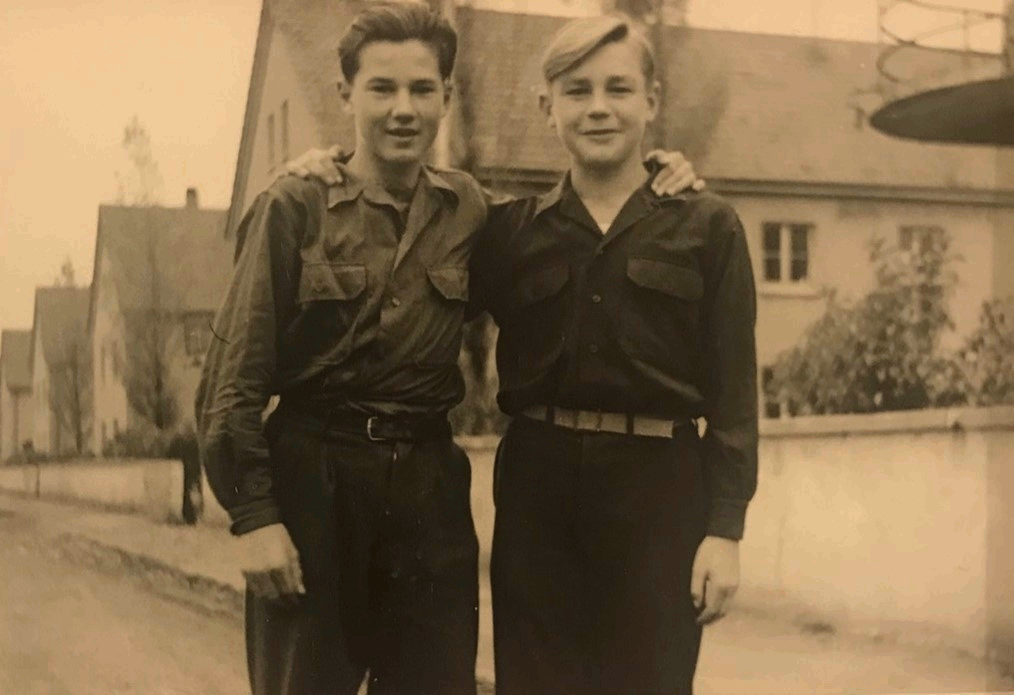
Andres (l.) with his friend Henn Liiv in 1948 (Credit: Erik Tender’s private collection).
At the end of September in 1944 Andres and Olga finally boarded in then a German town Gdinia. The trip had gone relatively safely. They had almost been bombed but luckily it just missed them. Andres and his mother stayed in a refugee camp there for a while. They were directed to the local school’s gym with 70 others. Olga got a job as a cook to support them. Andres didn’t speak the language and even the food was hard to get used to, German bread was made differently than the one at home. On top of that Andres caught tuberculosis. He had to walk 2 km to the hospital. At the hospital door he finally collapsed. He spent two weeks in a coma. When Andres was finally feeling better, he realized that he was sharing a hospital room with some German boys. He wanted to speak to them, so he tried talking in Estonian but with a German accent, the boys didn’t appreciate his effort and laughed. Nevertheless, by Christmas Andres was easily chatting in German. When the Soviet troops were getting closer in the end of 1944, Olga and Andres escaped to Weimar. There was also constant bombing. Andres was still not quite well so he was admitted to different sanatoriums just outside Weimar. There he finally got to eat good food again: potato salad, chocolate, hot cocoa which were considered luxury goods at the time. In his last sanatorium he met a lot of interesting people whom he made friends with and even made some songs of.
After the end of the war the Allied forces divided Germany and Weimar was going to stay under the Soviet Union jurisdiction. Andres and Olga had no other choice than to leave.
Andres and Olga and a group of other Estonians went to Bavaria which fell under US jurisdiction. They stayed in different refugee camps, including old German flight hangars near Memmingen. There Andres finally got to go to school again. In 1948 he went to an Estonian gymnasium in Augsburg where they stayed for the rest of their time in Germany.
Emigrating to the USA
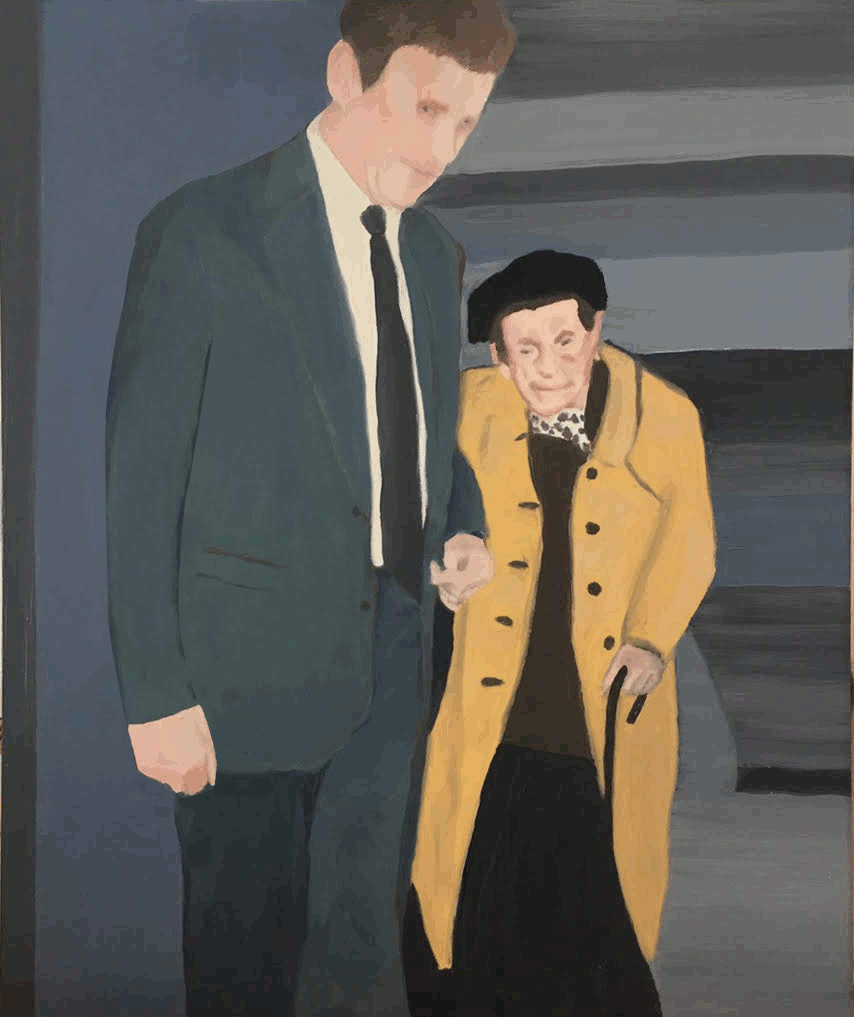
A painting of Andres and his mother Olga in the early 1990s by Diane Rosenblum (Andres’s daughter).
By 1950 it was clear that Estonia wasn’t going to be liberated any time soon. So when Andres and Olga got an opportunity to emigrate to the United States, they took it. They were directed to the state of Ohio. Andres was already 16 years old and had to go to high school. English wasn’t really a big problem for him because he had learnt it already back in Germany. There he adjusted to the new cultural space fully because now there weren’t any other Estonians at sight. He started to become like a regular American teen, he even got a side job on a local farm. After high school Andres found his love for sailing. Later he was able to go to New York where he became more involved in the world of theatre. Over the years he has translated many plays, danced in a ballet performance, he has traveled the US while sailing, worked as a carpenter and also served in the US military, he is also one of the founders of off-off Broadway theatre Kitchen. Thanks to him even during the Cold War an Estonian play by Paul-Eerik Rummo called “Cinderellagame” was brought to Broadway. He has been of great assistance to young Estonians in New York.
2020
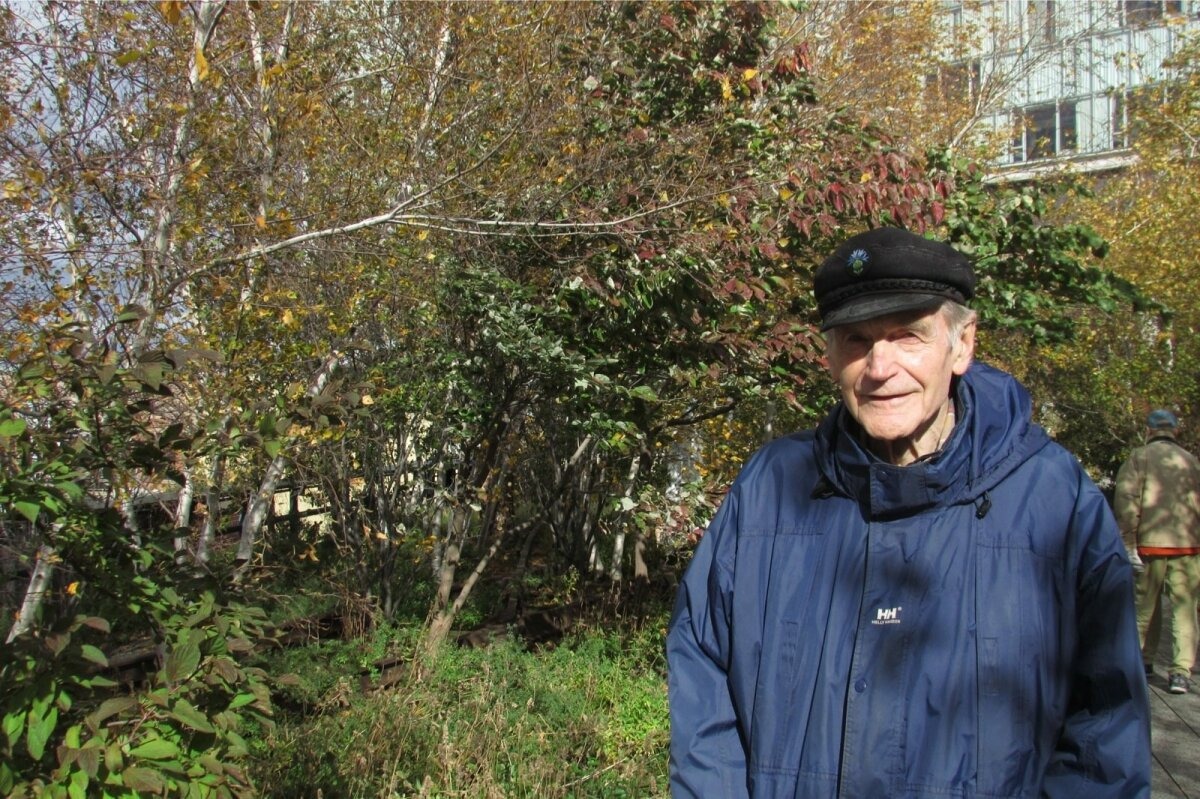
Andres Männik (2018).
Andres is now 86 years old and he still lives in New York. Even though he isn’t working anymore, he still leads a pretty active life: goes to museums and theatre whenever he can and communicates with his relatives back in Estonia via the Internet. Despite not having any Estonians near him, his Estonian is still proper, he speaks it with no accent. He also keeps an eye on Estonian news, so he has a pretty good understanding of what’s going on there.
Even though the Soviet Union robbed Andres of the opportunity to grow up in his home country, he has still managed to live a rich and fascinating life. Estonia is a free nation again and he doesn’t dwell on the horrific events of his past anymore but that doesn’t mean he has forgotten where he comes from. Andres shows how an oppressive and violent regime can take everything from you, but with faith and ambition it is still possible to build your life back up. Although Andres has had to move so much just to be able to stay alive, the definition of home has never changed for him. He still defines it as a warm nice place which shows that even the most cruel events can’t permanently ruin one’s vision of our most safe place – home.



